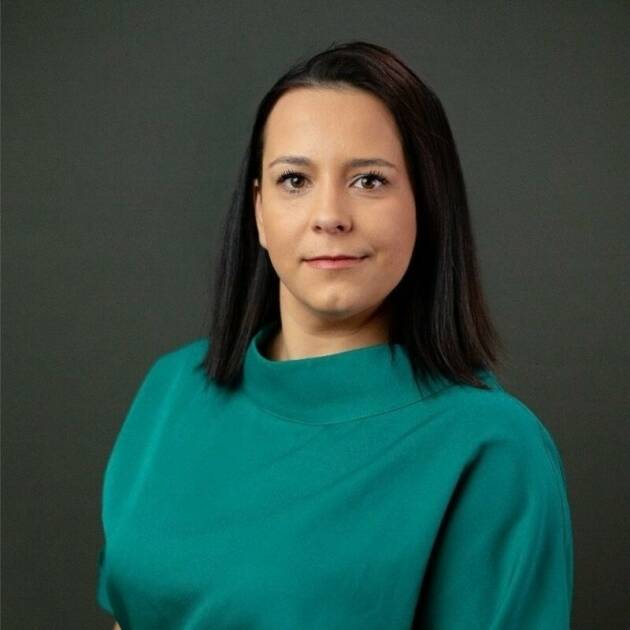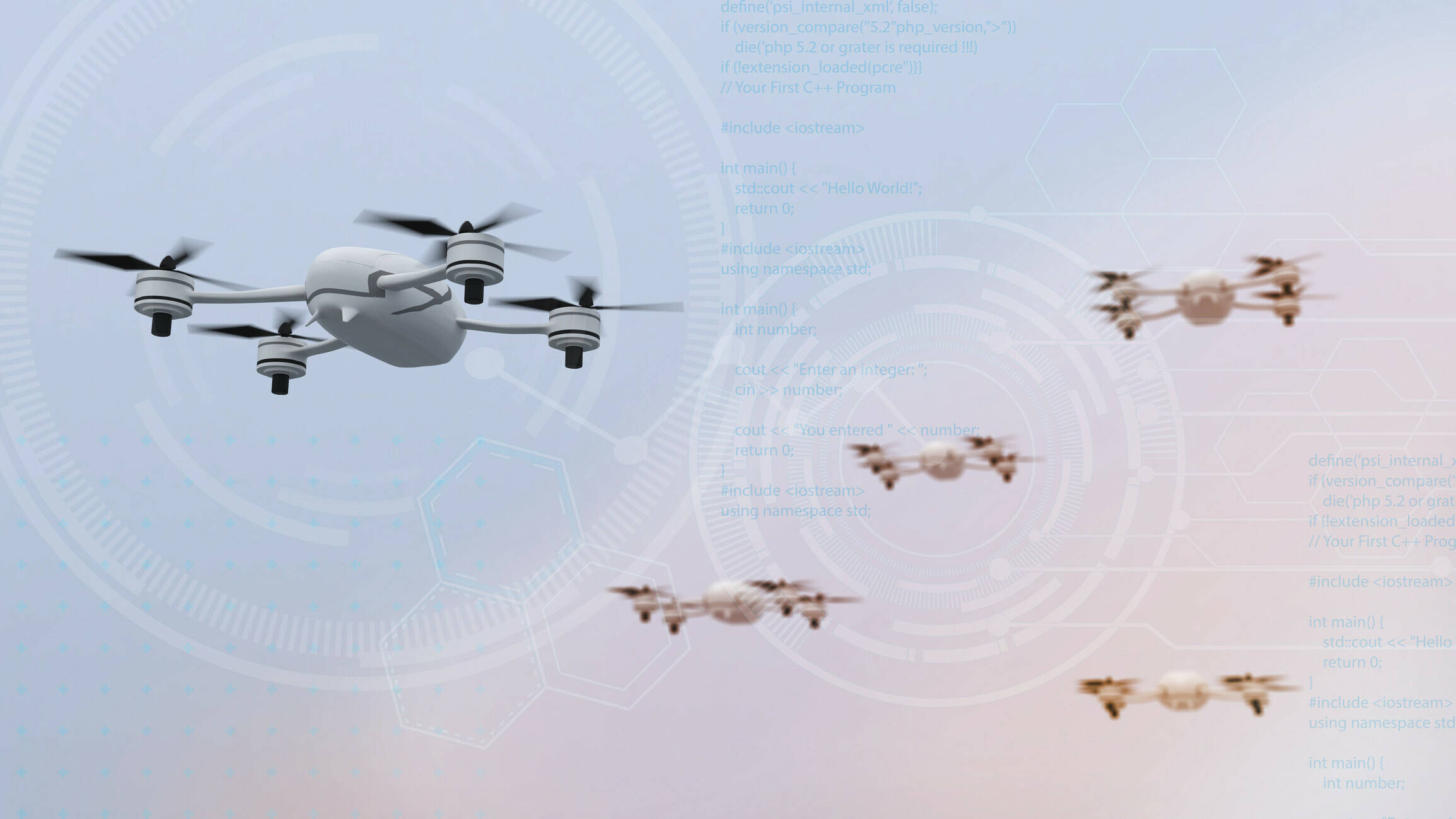




Eszter Kovacs, CEO and Co-Founder of DroneTalks


Underestimating complexity
About DroneTalks
“Our educational content empowers people of every discipline and culture who seek a deeper understanding of the drone industry and the innovative ideas within it,” says Kovacs. “We also have the opportunity to host experienced professionals in our interview series who take the chance to share their knowledge on emerging technologies, regulatory changes, revenue generation models and insider updates, among other topics.”
DroneTalks also provides in-person and online training for industry professionals as well as marketing and PR services for growing organisations. In addition, it hosts an invitation-only event for drone industry professionals, called Aerial Cities, that brings together urban environment regulators and C-level executives of drone organisations.
“Our goal is to bridge the gap that exists between urban environments, governments, transport and city planners and airspace users,” adds Kovacs.
Last but not least, DroneTalks hosts a jobs platform. Organisations can search for world-class professionals while job seekers can see industry-relevant jobs that allow them to take the next step in their career.
DroneTalks is an online platform created to spread ideas and educate professionals in the drone and advanced air mobility industries.
Kovacs admits, however, that only seven or eight years ago, she thought there would be a significant number of drones in the sky by 2024. Clearly, this hasn’t happened.
“Those of us without an aviation background underestimated the complexity of integrating new technologies into our airspace,” she says. “Safety is and always will be the top priority. Nevertheless, I remain optimistic. In a relatively short period of time, we've implemented two significant regulations and now operate with Specific Operations Risk Assessment (SORA).”
Kovacs points out that the move from horse and carriage to automobiles didn’t happen overnight and actually took more than two decades. She sees the move to autonomous drones and air taxis following a similar timeline.
“Because of investment challenges, I foresee a few tough years for startups, which will slow the number of drones and taxis in the skies,” she concludes. “However, consolidation is already happening, so we will certainly have fewer but more mature players in the years ahead.”
Implementing U-space
Kovacs also sees several challenges with U-space though she stresses that progress is being made.
The first concern is technological. U-space requires a high degree of automation and digitalisation to safely integrate manned and unmanned aircraft. This means the solutions must not only be robust, reliable, and interoperable but also support a range of services, including network identification, geo-awareness, UAS flight authorisation, and traffic information services.
Second, the necessary coordination between multiple stakeholders goes beyond the aviation ecosystem and must include city authorities and other users, such as the emergency services. This includes the safe integration of various types of UAS operations, from low-risk visual line of sight operations to more complex beyond visual line of sight operations in densely populated or sensitive areas.
“The development of necessary infrastructure, such as surveillance and communication technologies, requires substantial investment and is another challenge,” says Kovacs. “Additionally, the financial sustainability of U-space services, particularly in terms of long-term operations and maintenance, needs careful planning from all stakeholders.
It is no surprise, therefore, that Kovacs sees slower implementation than some of the more bullish predictions. “The Swiss announced U-Space above Zurich by 2024 and now we talk about Q1 2025,” she says. “But this will not stop U-Space adoption in Europe. As soon as the first initiatives are out, the others will follow. We only need a few path makers to share their work with the world.”
Sharing data
For safe operations, drones must be able to share data with ANSPs and CAAs to ensure a secure flight path.
Kovacs believes this will not only improve safety and efficiency but also reduce operational costs, fuel consumption and emissions through flight path optimisation. “It should be a collaborative effort to design a system from which we can all benefit,” she suggests.
Regulation will need to keep pace. Europe has clear frameworks for drones and U-space, specifically regulations 2019/947 and 2021/664. But Kovacs identifies challenges in industry compliance and staffing levels at CAAs.
“Many in the industry are unclear on how to adhere to these regulations and how to begin operations within the mandated safety requirements,” she says. “It is also evident that CAAs are understaffed. They lack sufficiently trained personnel to meet the demand.”
Eszter Kovacs, CEO and Co-Founder of DroneTalks, says that modernisation will consist of such elements as implementing new air traffic management systems, communication technologies, navigation procedures and surveillance capabilities and managing drones and advanced air mobility (AAM).
“Examples of updated and improved elements in airspace include the implementation of System Wide Information Management (SWIM), managing airspace boundaries for suborbital flights and artificial intelligence functionality,” she says. “But special attention is being paid to AAM, high-altitude platform systems (HAPS) and spacecraft. As the variety of users and applications increases, concepts like Advanced Flexible Use of Airspace (AFUA) become vital.”
Airspace is a crucial part of the aviation ecosystem. Airlines, air navigation service providers (ANSPs) and other airspace stakeholders, including local and civil aviation authorities (CAAs), must work together to modernise airspace to keep up with the demand from new and traditional users and the technological advances within the industry.






“Our educational content empowers people of every discipline and culture who seek a deeper understanding of the drone industry and the innovative ideas within it,” says Kovacs. “We also have the opportunity to host experienced professionals in our interview series who take the chance to share their knowledge on emerging technologies, regulatory changes, revenue generation models and insider updates, among other topics.”
DroneTalks also provides in-person and online training for industry professionals as well as marketing and PR services for growing organisations. In addition, it hosts an invitation-only event for drone industry professionals, called Aerial Cities, that brings together urban environment regulators and C-level executives of drone organisations.
“Our goal is to bridge the gap that exists between urban environments, governments, transport and city planners and airspace users,” adds Kovacs.
Last but not least, DroneTalks hosts a jobs platform. Organisations can search for world-class professionals while job seekers can see industry-relevant jobs that allow them to take the next step in their career.
DroneTalks is an online platform created to spread ideas and educate professionals in the drone and advanced air mobility industries.
About DroneTalks

Eszter Kovacs, CEO and Co-Founder of DroneTalks


Kovacs admits, however, that only seven or eight years ago, she thought there would be a significant number of drones in the sky by 2024. Clearly, this hasn’t happened.
“Those of us without an aviation background underestimated the complexity of integrating new technologies into our airspace,” she says. “Safety is and always will be the top priority. Nevertheless, I remain optimistic. In a relatively short period of time, we've implemented two significant regulations and now operate with Specific Operations Risk Assessment (SORA).”
Kovacs points out that the move from horse and carriage to automobiles didn’t happen overnight and actually took more than two decades. She sees the move to autonomous drones and air taxis following a similar timeline.
“Because of investment challenges, I foresee a few tough years for startups, which will slow the number of drones and taxis in the skies,” she concludes. “However, consolidation is already happening, so we will certainly have fewer but more mature players in the years ahead.”
Underestimating complexity
Kovacs also sees several challenges with U-space though she stresses that progress is being made.
The first concern is technological. U-space requires a high degree of automation and digitalisation to safely integrate manned and unmanned aircraft. This means the solutions must not only be robust, reliable, and interoperable but also support a range of services, including network identification, geo-awareness, UAS flight authorisation, and traffic information services.
Second, the necessary coordination between multiple stakeholders goes beyond the aviation ecosystem and must include city authorities and other users, such as the emergency services. This includes the safe integration of various types of UAS operations, from low-risk visual line of sight operations to more complex beyond visual line of sight operations in densely populated or sensitive areas.
“The development of necessary infrastructure, such as surveillance and communication technologies, requires substantial investment and is another challenge,” says Kovacs. “Additionally, the financial sustainability of U-space services, particularly in terms of long-term operations and maintenance, needs careful planning from all stakeholders.
It is no surprise, therefore, that Kovacs sees slower implementation than some of the more bullish predictions. “The Swiss announced U-Space above Zurich by 2024 and now we talk about Q1 2025,” she says. “But this will not stop U-Space adoption in Europe. As soon as the first initiatives are out, the others will follow. We only need a few path makers to share their work with the world.”
Implementing U-space
For safe operations, drones must be able to share data with ANSPs and CAAs to ensure a secure flight path.
Kovacs believes this will not only improve safety and efficiency but also reduce operational costs, fuel consumption and emissions through flight path optimisation. “It should be a collaborative effort to design a system from which we can all benefit,” she suggests.
Regulation will need to keep pace. Europe has clear frameworks for drones and U-space, specifically regulations 2019/947 and 2021/664. But Kovacs identifies challenges in industry compliance and staffing levels at CAAs.
“Many in the industry are unclear on how to adhere to these regulations and how to begin operations within the mandated safety requirements,” she says. “It is also evident that CAAs are understaffed. They lack sufficiently trained personnel to meet the demand.”
Sharing data
Eszter Kovacs, CEO and Co-Founder of DroneTalks, says that modernisation will consist of such elements as implementing new air traffic management systems, communication technologies, navigation procedures and surveillance capabilities and managing drones and advanced air mobility (AAM).
“Examples of updated and improved elements in airspace include the implementation of System Wide Information Management (SWIM), managing airspace boundaries for suborbital flights and artificial intelligence functionality,” she says. “But special attention is being paid to AAM, high-altitude platform systems (HAPS) and spacecraft. As the variety of users and applications increases, concepts like Advanced Flexible Use of Airspace (AFUA) become vital.”
Airspace is a crucial part of the aviation ecosystem. Airlines, air navigation service providers (ANSPs) and other airspace stakeholders, including local and civil aviation authorities (CAAs), must work together to modernise airspace to keep up with the demand from new and traditional users and the technological advances within the industry.

